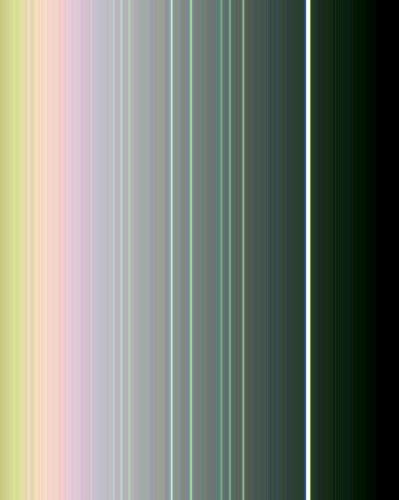NASA/JPL-Caltech/Voyager 2Various views of Uranus, 1986Gelatin silver and chromogenic printsImages c
NASA/JPL-Caltech/Voyager 2Various views of Uranus, 1986Gelatin silver and chromogenic printsImages courtesy NASA/JPL-Caltech The bottom image presents two views of Uranus’s pole of rotation, one a true color image constructed from blue-, green-, and orange-filtered photographs; and the other a false color image that exaggerates the atmospheric variations at the pole. In the view on the right, ultraviolet-, violet-, and orange-filtered data were coded, respectively, as blue, green, and red. The view reveals a dark haze or “hood” over the pole, which gives way to progressively lighter convective bands moving toward the equator. The contrast between the bands shown here is computer-enhanced, making subtle variations in Uranus’s atmospheric composition appear stark. The top left view depicts all nine of Uranus’s known rings in false color. The brightest and furthest ring from Uranus is at right in this photograph. Color averages were taken from two sets of images made with green, clear, and violet filters in order to determine the correct color relationships between each ring. The bright lines are the rings, while the fainter pastel bands are relics of computer enhancement.The prints on view in the Our Solar System gallery are on loan from the University of Arizona Space Imagery Center. A partial selection of those images is recreated here using digital scans of a different set of Voyager 2 prints made by the California Institute of Technology Jet Propulsion Laboratory in cooperation with NASA. To view thousands more photographs from NASA’s Planetary Image Archive, visit photojournal.jpl.nasa.gov. -- source link
Tumblr Blog : ccpastronomical.tumblr.com
#voyager 2#uranus#chromogenic print#twentieth century#20th century#astronomical


